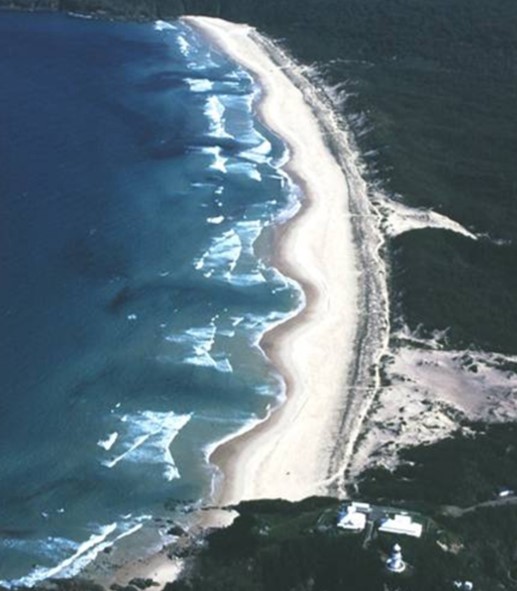There are a number of different ways in which rip currents can be formed, but essentially rip currents develop when there are alongshore variations in wave breaking. The most common are open-coast channel rip currents that are found on sandy surf beaches with sandbars. Rip currents also occur near coastal structures, and their behaviour can vary significantly from channel rips. They are termed boundary rip currents and can form as a result of longshore currents being deflected offshore.
Channel rips
Channel rip currents are bathymetrically controlled develop when there are variations in wave breaking along the beach. Sandbars are the most common cause of variations in wave breaking on open sandy beaches away from headlands and other obstructions (e.g., rocks, coastal structures). These rips are also often called `open-coast beach rips’ or `fixed rips’.
Rip channels are often regularly spaced along the beach and spacing can vary from 10-500m. Beach rips are typically found on beaches exposed to open-ocean swell waves.
See more: Channel rip currents

Summer of 2013 at Porthtowan, Cornwall, UK

Summer of 2011 at Gwynver, Cornwall, UK



Boundary rips
Rip currents can also occur on beaches without sandbars or rip channels. These rips are caused by permanent obstructions in the surf zone and/or along the shoreline, and are also often called `topographic rips’ or `permanent rips’.
These hard objects obstruct longshore (littoral) currents that run parallel to the beach and deflect them into an offshore direction (rip current). Deflected boundary rips can be caused by headlands or rock outcrops on the beach but are also found near coastal structures, such as groynes or breakwaters, even in relatively low-energy wind-wave conditions. As opposed to beach channel rips, boundary rip flows can form when the longshore currents are driven by waves approaching the beach at an angle as well as alongshore variations in wave breaking.
Boundary rips can become severe in large waves and typically extend significantly farther offshore of the surf zone (up to 3–4 surf-zone widths) than open-coast channel rips. The severity of a boundary rip can also be enhanced in embayed or pocket beaches where a small beach is bound by two headlands, restricting the development of normal beach rip circulations. These high-energy rips are often called ‘mega rips’.
See more: Boundary rip currents


